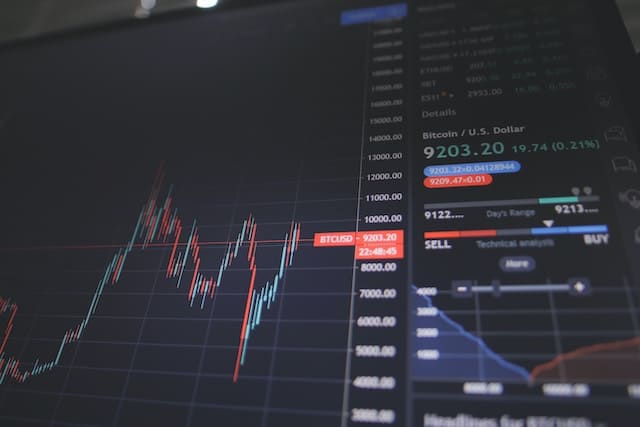
The evolution of financial trading has seen a significant transformation with the integration of artificial intelligence (AI) and machine learning. These advancements have brought about the need for secure and scalable trading platforms that can handle real-time data and make informed decisions. In this article, we will explore the critical aspects of developing such a platform, touching on financial data, risk management, and regulatory compliance.
To develop a robust AI-driven trading platform, it is essential to grasp the fundamental role that AI and machine learning play in the financial sector. These technologies analyze vast amounts of financial data to identify market trends and investment opportunities. They enhance decision-making processes, enabling traders to implement effective investment strategies and maximize returns.
En parallèle : How to configure a secure and efficient data pipeline for real-time analytics in healthcare?
AI algorithms can process information from diverse sources, including social media, news articles, and historical stock data. This comprehensive analysis drives trading models that predict market movements with impressive accuracy. Therefore, a trading platform embedded with AI capabilities empowers traders to operate with unprecedented efficiency and precision.
Security and scalability are paramount when developing an AI-driven trading platform. Financial institutions handle sensitive customer information and substantial investment portfolios, making them prime targets for cyber-attacks. Therefore, robust security measures are indispensable.
Sujet a lire : What are the best practices for implementing secure machine-to-machine communication in IoT networks?
To ensure security, begin by implementing multi-factor authentication and encryption protocols. These measures protect customer data and trading activities from malicious actors. Additionally, regular security audits and penetration testing can identify and rectify vulnerabilities.
Scalability is the capacity of the platform to handle increasing amounts of data and user activity without compromising performance. Use cloud-based solutions to scale resources dynamically based on demand. This approach ensures that the platform remains responsive even during periods of high trading volume.
Furthermore, adopting microservices architecture can enhance scalability. By breaking down the platform into smaller, manageable services, developers can update and maintain components independently, minimizing downtime and improving overall performance.
In financial trading, real-time data and advanced analytics are indispensable. They enable traders to respond swiftly to market fluctuations and execute trades at optimal times. An AI-driven platform must integrate these elements effectively to provide users with actionable insights.
Data sources should include live feeds from stock exchanges, news outlets, and social media. These feeds provide a continuous stream of information that AI algorithms can analyze to predict market trends. Additionally, historical data is essential for training machine learning models and validating their accuracy.
Advanced analytics involves using AI to identify patterns and anomalies in the data. For instance, fraud detection algorithms can recognize unusual trading activities that may indicate malicious intentions. Similarly, regulatory compliance tools can ensure that trading activities adhere to industry standards and legal requirements.
By incorporating these features, the platform can offer real-time analysis and informed decisions, empowering traders to stay ahead of the market.
In financial trading, risk management is crucial to safeguard investment portfolios and prevent substantial losses. An AI-driven platform must have built-in mechanisms to identify and mitigate risks.
Risk management strategies begin with diversifying the portfolio to spread risk across various assets. AI can assist by analyzing the risk profiles of different investments and suggesting optimal diversification strategies.
Next, set up automatic stop-loss and take-profit orders. These orders automatically execute trades when prices reach predetermined levels, minimizing potential losses and securing profits.
Furthermore, leverage AI to conduct continuous risk analysis. Machine learning models can predict potential risks based on current market conditions and historical data. This proactive approach allows traders to adjust their strategies in real-time, reducing exposure to adverse market movements.
Integrating these risk management features into the trading platform ensures that users can trade confidently, knowing that their assets are protected.
Compliance with regulatory standards is a non-negotiable aspect of developing a financial trading platform. Financial institutions must adhere to stringent regulations to maintain customer trust and avoid severe penalties.
AI can play a pivotal role in ensuring compliance. Regulatory compliance tools can automate the monitoring of trading activities, flagging any discrepancies that may violate industry standards. These tools can also generate detailed compliance reports, simplifying the audit process.
Moreover, staying updated with changes in regulations is vital. Regulatory bodies frequently update their guidelines, and the platform must adapt accordingly. AI-driven systems can automate the update process, ensuring that the platform remains compliant without manual intervention.
By prioritizing regulatory compliance, the platform can foster a trustworthy environment for traders, enhancing its reputation and attracting a broader user base.
Developing a secure and scalable AI-driven platform for financial trading is a multifaceted endeavor that demands a comprehensive approach. By understanding the role of AI, building robust architecture, integrating real-time data, implementing effective risk management strategies, and ensuring regulatory compliance, developers can create a platform that meets the evolving needs of modern traders.
This platform will not only enhance decision-making and investment strategies but also provide a secure environment for trading. As AI continues to revolutionize the financial sector, embracing these advancements will be crucial for staying competitive and achieving long-term success in the stock market.
By following the guidelines outlined in this article, developers and financial institutions can create a cutting-edge trading platform that offers unparalleled financial services, empowering traders to navigate the complexities of the market with confidence and precision.